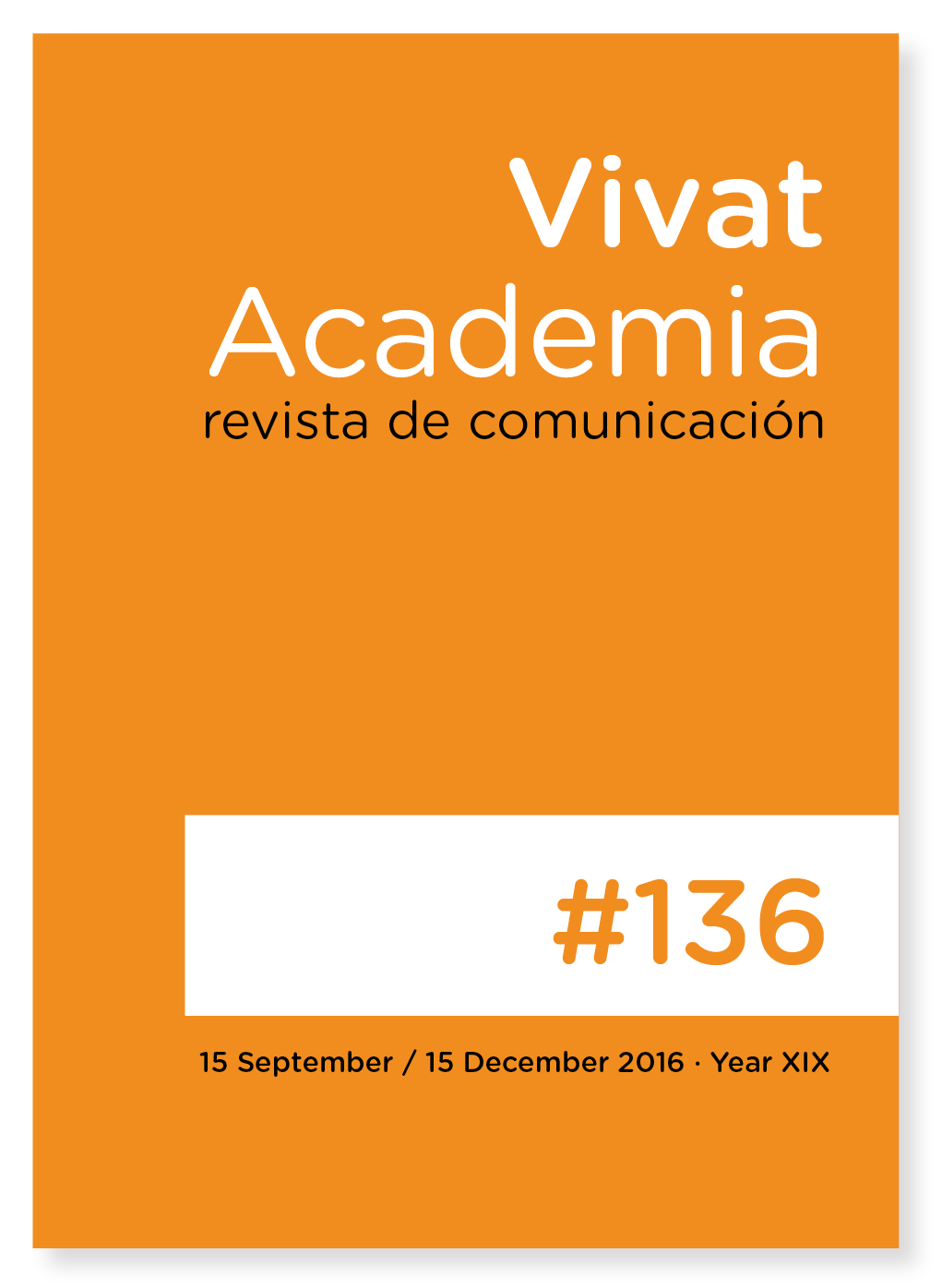Emotional burnout syndrome syndrome in women researchers. The case of the Juárez Autonomous University of Tabasco
Main Article Content
Abstract
The objective was to determine through a qualitative approach the presence of Emotional burnout syndrome EBS); the causes associated to the women researchers who belong to the National System of Researchers in México, at the Juarez Autonomous University of Tabasco and its relationship to the development of his career in research. Semi-structured interviews were applied to 13 women researchers and analysis of the categories was carried out with the selective axial open code method, with the support of the Atlas.ti 6.0 program. The results show evidence of Emotional burnout syndrome associated with multiple functions and workload, depersonalization toward students and reduced sense of personal accomplishment related to various causes including lack of recognition. It is concluded that the researchers do perceive the presence of the EBS generated by multiple functions, which affects their career in research; but is not perceived to be linked to a gender issue, but of a structural nature.
Downloads
Article Details
References
Libros completos:
El Sahili, L.F. (2011). Docencia: riesgos y desafíos. México: Trillas.
Freudenberger, H.J. & Nort, G. (1985). Women´s Burnout. London: Penguin Books.
Gil-Monte, P. R. (2005). El síndrome de quemarse por el trabajo (burnout): una enfermedad laboral en la sociedad del bienestar. Madrid: Pirámide.
Gil-Monte, P. y Peiró, J. (2009). Desgaste psíquico en el trabajo: el síndrome de quemarse. Madrid, España: Editorial Síntesis, S.A.
Goetz, J.P. y LeCompte, M.D. (1988). Etnografía y diseño cualitativo en investigación educativa. Madrid, España: Ediciones Morata.
Stake, R.(2010). Investigación con estudios de casos. (5ta Edición) Madrid, España: Ediciones Morata
Artículos en papel y electrónicos:
Agut, S., Grau, R. y Beas, M. (Diciembre, 2003). Burnout en mujeres: un estudio comparativo entre contextos de trabajo y no trabajo. Trabajo presentado en el Simposio del 2003 en Aspectos psicosociales del estrés ocupacional de la Universitat Jaume I. Recuperado de http:// www.salves.com.br/virtua/Burnour_en_muj.htm
Arquero, J.L. y Donoso, J.A. (2013). Docencia, investigación y burnout. El síndrome del quemado en profesores universitarios de contabilidad. Revista de contabilidad, 16(2), 94-105. http://dx.dor.org/10.1016/j.rcsar.2013.04.001
Bakker, A. y Demerouti, E. (2013). La teoría de las demandas y los recursos laborales. Journal of Work and Organizational Psychology, 29 (Special Issue), 107-115. DOI: http://dx.doi.org/10.5093/tr2013a16
Boardman, C. y Bozeman, B. (2007). Role strain in university research centers. Journal of Higher Education, 78(4), 430-463
Carlin, M., y Garcés de los Fayos, E. (2010). El síndrome de burnout: Evolución histórica desde el contexto laboral al ámbito deportivo. Anales de psicología, 26(1), 169-180
Consejo Nacional de Ciencia y Tecnología [CONACYT] (2012, 26 de diciembre). ACUERDO por el que se reforman diversos artículos del Reglamento del Sistema Nacional de Investigadores. Diario Oficial de la federación. Segunda Sección, 1-16.
Didou, A., y Gérard, E. (2010). El Sistema Nacional de Investigadores, Veinticinco años después. La comunidad científica entre distinción e internacionalización. México: ANUIES.
Didou, A., y Gérard, E. (2011). El Sistema Nacional de Investigadores en 2009. ¿Un vector para la internacionalización de las élites científicas? Perfiles Educativos, 33(132), 29-47. Recuperado de http://www.redalyc.org/src/inicio/ArtPdfRed.jsp?iCve=13218510003
Friedman, I. (2003). Self-efficacy and burnout in teaching: the importance of interpersonal-relations efficacy. Social Psychology of Education, 6, 191–215.
Gil-Monte, P. (2002). The influence of gender on the development of Burnout syndrome process in nursing professionals. Psicologia em Estudo, Maringá, 7(1), 3-10. Recuperado de http://www.scielo.br/ scielo.php?script=sci_ arttext&pid=S1413-73722002000100003&lng= pt&nrm=iso
Guerrero, B. E. (2003). Análisis pormenorizado de los grados de burnout y técnicas de afrontamiento del estrés docente en profesorado universitario. Anales de psicología, 19, 145-158. Recuperado de http:// www.invenia.es/oai:dialnet.unirioja.es:ART0000015651
Halbesleben, J.R. & Buckley, R.M. (2004). Burnout in organizational life. Journal of Management, 30(6), 859-879
Kyriacou, C. & Sutcliffe, J. (1977). Teacher stress: A review. Educational Review, 29, 299-306
Magaña, D., Aguilar, N. y Sánchez, P. (2014). Burnout among Research teams: Evidence from Mexican ‘cuerpos academicos’. Business Education & Accreditation. 6(2), 35-46.
Magaña, D.E. y Sánchez, P.A. (2008). Síndrome de Desgaste Emocional en Investigadores Mexicanos. Interamerican Journal of Psychology, 42(2),353-362.
Marrau, C. (2004). El síndrome de Burnout y sus posibles consecuencias en el trabajador docente. Fundamentos en Humanidades Universidad Nacional de Fundamentos en Humanidades, 5(010), 53-68. Recuperado de http:// redalyc.uaemex.mx/redalyc/src/inicio/ArtPdfRed.jsp?iCve=18401004
Maslach, C. & Jackson, S.E. (1981). The measurement of experienced burnout. Journal of Occupational Behavior, 2, 99-113. Recuperado de http:// www.rci.rutgers.edu/~sjacksox/PDF/TheMeasurementofExperienced Burnout.pdf
Maslach, C. & Leiter, M. (1997). The truth about burnout. How organizations cause personal stress and what to do about it. San Francisco, California: Jossey Bass Publishers.
Oplatka, I. (2002). Women principals and the concept of burnout: an alternative voice? International Journal of Leadership in Education, 5(3), 211-226. DOI: 10.1080/136031200112873
Pedrero, P.E., Puerta, G.C., Lagares, R.A., Sáez, M.A. y Farcia, B.I. (Enero, 2004) Estudio del burnout en profesionales de drogodependencias. Doyma, 6 (1), 5-15. Recuperado de http://db.doyma.es/cgi-bin/wdbcgi.exe/doyma/mrevista.resumen?pident=13056395
Pines, A. & Kafry, D. (1978). Occupational tedium in the social services. Social Work, 23(6), 499-508
Raya, F., Moriana, A. y Herrruzo, J. (2010). Relación entre el síndrome de burnout y el patrón de conducta tipo a en profesores. Ansiedad y Estrés,16 (1), 61-70
Rodríguez, G., Gil, J. y García, E. (1999). Metodología de la investigación cualitativa. (2ª. ed.). Málaga: Aljibe.
Rubino, C. , Volpone, S., & Avery, D. (2013). Burnout on Mars and Venus: exploring gender differences in emotional exhaustion. Gender in Management: An International Journal, 28(2). 74- 93. http://dx.doi.org/10.1108/17542411311303220
Strauss, A. y Corbin, J. (2002). Bases de la investigación cualitativa. Técnicas y procedimientos para desarrollar la teoría fundamentada. Colombia: Editorial Universidad de Antioquía.
Universidad Juárez Autónoma de Tabasco (2012). Contrato Colectivo de Trabajo 2013 -2015. Villahermosa, Tabasco, México: Autor.
Universidad Juárez Autónoma de Tabasco [UJAT] (2015). Tercer Informe de Actividades 2014. Dr. José Manuel Piña Gutiérrez. Tabasco, México: UJAT.
Whitaker, K.S. (1996). Exploring causes of principal burnout. Journal of Educational Administration, 34(1), 60–71. Recuperado de http://www. emeraldinsight.com/10.1108/09578239610107165





